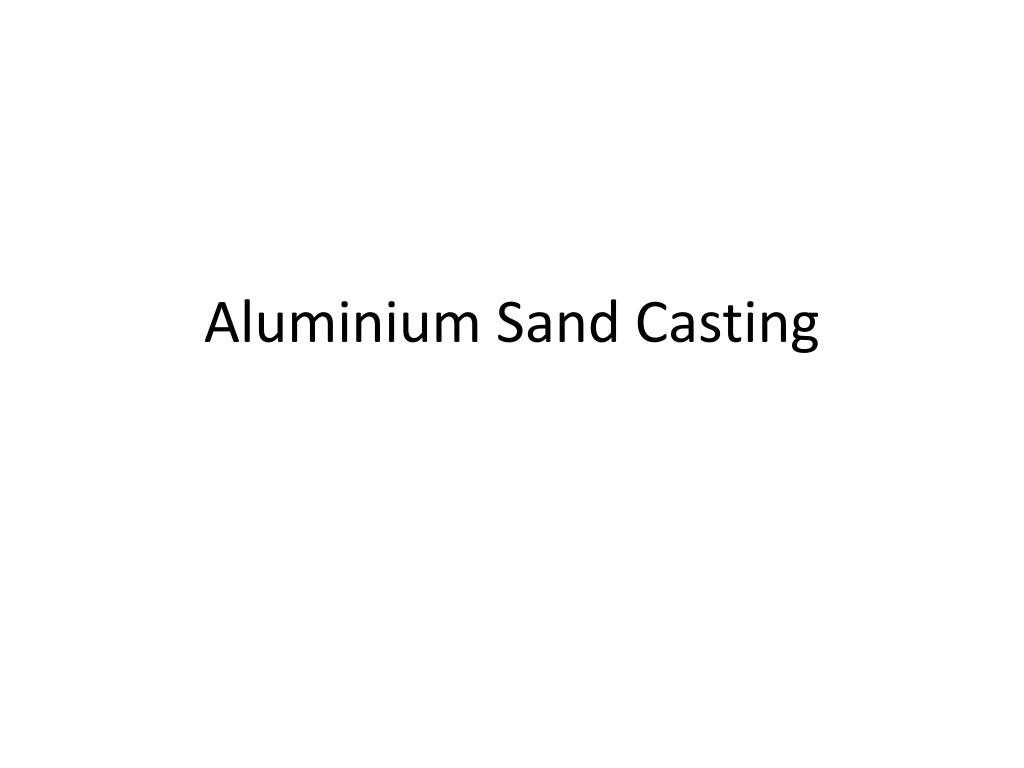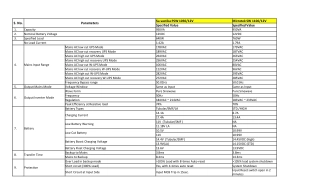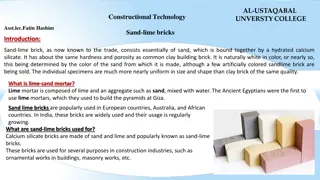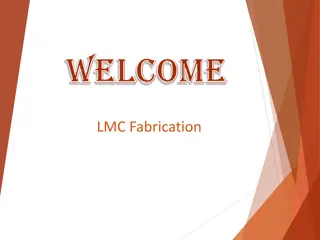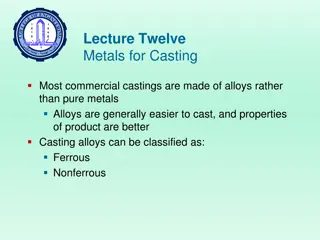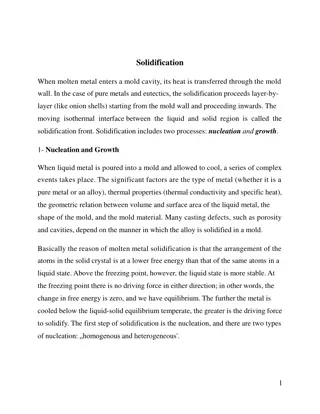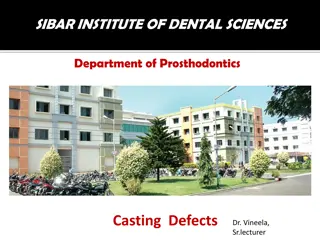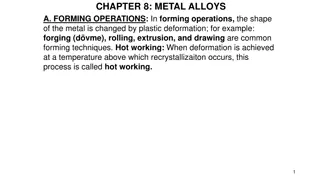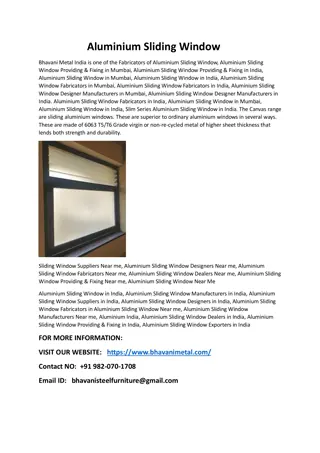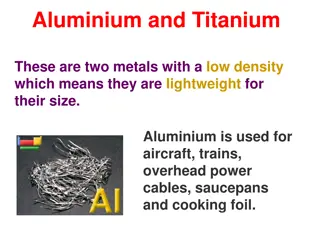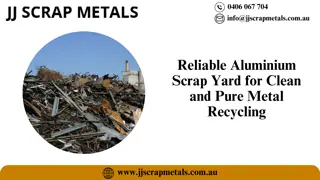Understanding Aluminium Sand Casting Process
Aluminium sand casting is a cost-effective process commonly used in schools due to its affordability and achievable casting temperature. The process involves pattern making, moulding, pouring molten metal, removing sand, and cleaning the final workpiece. Quality patterns and moulds are crucial for successful castings, with specific requirements for radiused corners, drafted sides, and good surface finish. Proper handling during pouring is essential for safety.
Download Presentation

Please find below an Image/Link to download the presentation.
The content on the website is provided AS IS for your information and personal use only. It may not be sold, licensed, or shared on other websites without obtaining consent from the author. Download presentation by click this link. If you encounter any issues during the download, it is possible that the publisher has removed the file from their server.
E N D
Presentation Transcript
Aluminium sand casting is the only metal casting process that is commonly available in schools. This is because the material is cheap and the temperature required for casting 750oC is not hard to achieve. The process involves 6 distinct stages: 1. Making the pattern 2. Encasing the pattern in moulding sand 3. Removing the pattern leaving the sand mould 4. Pouring the molten metal into the mould 5. Removing the sand from around the solidified work piece. 6. Cleaning up the work piece.
Pattern Making The quality of the casting depends on the quality of the pattern. The requirements are: - Radiused corners - Drafted sides (tapered) - Good surface finish. Most moulds are made from wood and they may be flat backed for simple forms or split as in the image below (note that the two halves are pegged together for location).
Mould making The moulding must be sieved to get rid of lumps and any foreign matter, and damp enough to hold its shape. The mould box to contain the sand is a two-part construction with pins to locate the halves together. The mould is built up in stages: Stage 1 The lower half, the drag, is placed on a flat board around the lower half of the pattern (inverted). Parting powder is dusted onto the pattern (to prevent sticking) and the mould is then filled with sand.
Stage 2 The drag is turned over and the cope and top half of the pattern are put in place. The sprue pins and then added and the mould box filled with sand. Sprue Pins Cope Parting powder 2nd Part of split pattern added
Stage 3 Pouring basins are made in the sand and the sprue pins are carefully removed to create the runner and the riser. Vents are made in the sand to allow the steam to escape.
Stage 4 The mould box is opened, the pattern is removed, and gates are made in the sand to allow the molten metal to flow into the cavity. The mould is re-assembled ready for pouring. Vents Riser Pouring Basin Mould Cavity Gate
Pouring Aluminium melts at 600oC but needs to be at 750oC for pouring. Pouring should be slow and continuous into the pouring basins until a pool forms at the top of the riser. Great care is needed, the safety issues are important: - Wear protective clothing: gloves, apron, full face mask. - Ensure that there is fume extraction and good ventilation.
Fettling Fettling is the term used to describe the process of finishing off the work by removing the runners and risers with a hacksaw and file, and cleaning up the casting.
Lost pattern casting Patterns for casting can be made from expanded polystyrene (the sort used for packaging). This can be embedded in the sand and when the molten aluminium is poured in, the pattern is totally burned away. The main advantage is that the pattern can be as complex as required as it doesn t have to be removed from the sand but it does mean that it can only be used once. The disadvantage is that when the polystyrene burns, it gives off toxic fumes therefore should only be carried out where there is proper ventilation.
